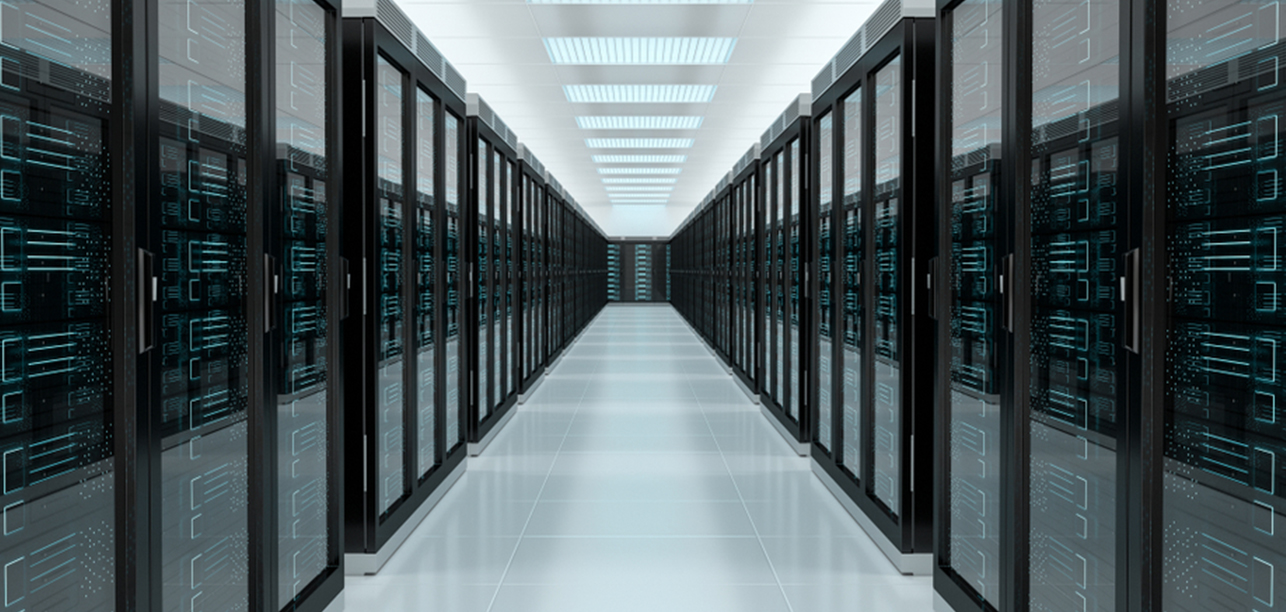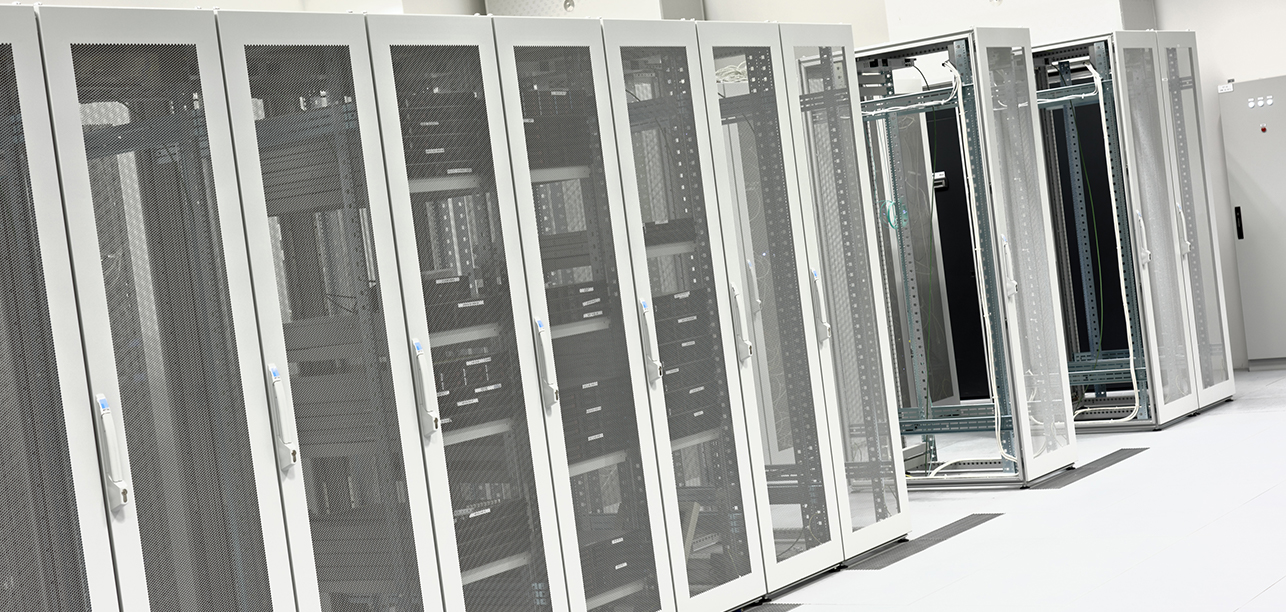Month: July 2012

Cloudonomics: achieving cost-efficiency and agility through hybridization — Part 3
In my last two posts, I covered the public IaaS cloud and suggested that a hybrid solution that takes the best from cloud and other IT Infrastructure platforms like managed hosting and colocation is the way to go. I explained there are two key benefits for hybrid — improved economics and improved agility, and then detailed the cost benefits. Next, let’s consider agility, a word that is much used by IaaS vendors. It is where the cloud truly shines — in just about every situation. So what’s not to love? While agility is closely related to accessibility, it’s diametrically opposite to security and control. This is yet another reason why a hybrid approach is often the right one for enterprises.
A CIO friend of mine recently confided how upset he was when he found out that employees within most of the company’s business units were leveraging public cloud services — without his knowledge. It was especially infuriating given that he’d just spent millions of dollars on two new corporate data centers that were only half full. In his mind, something had gone horribly wrong. A major contributing factor to the surprising popularity of public IaaS cloud was the inefficiency of internal IT. It took them months to add new servers in their own data centers. In fairness, the blame didn’t rest squarely with IT. They had to get budgetary approval, place orders, get various sign-offs, install the servers and finally release the infrastructure to the appropriate business unit, many weeks later. So, instead of addressing what they felt was a sub-optimal solution, employees had started side-stepping IT altogether. They were going straight to third-party public IaaS cloud providers – corporate credit cards in hand. The promise of agility was pulling the business units towards the public cloud.
All of this was quite annoying to my CIO friend. Cost wasn’t even his biggest grievance. The bigger concerns related to security and liability issues. When users go to the public cloud, they bypass many important processes and controls that the enterprise had spent years putting into place. The public IaaS cloud doesn’t offer the same level of control or oversight that internal IT does. Unlike their own internal data centers or even a colocation environment, with a public cloud, enterprises have no insight into the servers, switches, and storage environment.
Since everything in the public cloud is shared as multi-tenanted resources, enterprises have to place their faith in the integrity of the cloud service provider and the underlying software. Additionally, in the public cloud, there is almost no flexibility in network topology or hardware configuration. Want to use the latest fast SSD drives for your Oracle server? Too bad. Have a penchant for the latest firewalls from Cisco? Sorry.
Therefore, while agility is clearly a big win for the public cloud, security and control issues complicate matters. Again, a hybrid, workload-centric, approach makes sense. Use the public cloud for workloads that aren’t high security, and consider the economics of the workload in your decision too. Some hybrid cloud solutions even allow enterprises to reap the agility benefits of the public IaaS cloud in their own data center — essentially creating an on-premise private cloud.
In conclusion, it’s important that enterprises keep their head ABOVE the clouds by putting their business needs foremost. Take a workload-centric approach, and pick the right IT Infrastructure tool for the job — whether that is public or private cloud, managed hosting or colocation. The best hybrid solutions will be greater than the sum of their parts and will allow enterprises to create a flexible infrastructure that can be centrally managed and that will evolve with their business.
Looking for a variety of platforms to achieve your own hybrid solution? See how Distil Networks created a hybrid environment with colocation, managed hosting, bare metal and IP service from Internap. Read the case study.
Explore HorizonIQ
Bare Metal
LEARN MORE
Stay Connected

Cloudonomics: achieving cost-efficiency and agility through hybridization – Part 2
In my previous post, I explained the public IaaS cloud and the conundrum faced by IT professionals who are eager to realize the benefits of the public cloud but also require flexibility, control, and security. A tall order, but possible with the right mix of IT Infrastructure platforms. Let’s pick up where we left off with why a hybrid hosting solution is often the best solution…
A hybrid solution is one that melds the existing internal capabilities and assets of the IT organization with the benefits that the cloud offers. There are two main reasons that enterprises are attracted to public IaaS clouds: improved economics and improved agility. The combination of these factors actually makes a hybrid solution very compelling.
What is cloudonmics?
Let’s start with the economics. What is the cost savings potential of public IaaS clouds? Will an enterprise save money by moving servers into the cloud? Probably not! Compare the ‘all-in’ costs for operating thousands of servers for a few years in a well-run corporate data center (or wholesale colocation environment) versus having that same capacity on a pay-as-you-go public IaaS cloud. The cloud will lose every time … badly.
This is a surprise to most people and somewhat of a dirty secret within the IaaS industry. For predictable workloads and core base infrastructure that is always on, the public cloud is a more expensive option. This economic imbalance only gets worse when you consider that Moore’s Law allows internal IT to more than triple the performance per dollar with every server refresh. Are we seeing similar price declines with IaaS cloud services? Not really, and we probably won’t any time soon.
On the other hand, the public cloud can make a lot of sense for unpredictable workloads. Enterprises can leverage the cloud to expand capacity “on demand” without incurring capital expenditures on new servers. Workloads that are well suited for public IaaS clouds typically have great variability in demand with significant traffic peaks and troughs, such as batch jobs, new software rollouts, marketing campaigns, and seasonal projects. Perhaps human resources needs some extra capacity during employee enrollment periods or sales needs more during an e-commerce initiative and needs less during the holiday season.
The most cost-effective approach for an enterprise is often a combination of public cloud, other third-party IT service options (such as colocation, managed hosting or even private cloud), and in-house IT resources. This hybrid approach makes even more sense when an enterprise already has existing sizable infrastructure investments. It’s generally a good strategy to consider the individual workload when making a decision about whether to run it on a public IaaS cloud or elsewhere.
That’s all for now. Check our part 3 as I discuss the agility of a hybrid solution.
Explore HorizonIQ
Bare Metal
LEARN MORE
Stay Connected

Cloudonomics: achieving cost-efficiency and agility through hybridization – Part 1
The Cloudonmics Rebranding Frenzy: Innovation and Disruption Beneath the Surface
Recently, just about every technology company on the planet has been busy repainting their offerings with a cloud brush. They’re layering it on thick, rebranding themselves with a reckless abandon that we haven’t seen since the “dot com” era, more than a decade ago. Even though the cloud hype meter is revving uncontrollably, there’s plenty of real innovation and disruption happening beneath the surface. Unfortunately, it can be tough for enterprises to cut through the buzzwords and marketing double-speak and articulate a cloud strategy that makes sense and meets the needs of the business.
Infrastructure-as-a-Service (IaaS): The Foundation of the Cloud-Layered Cake
This three-part blog series approaches things from the bottom of the cloud-layered cake: Infrastructure-as-a-Service (IaaS). Almost every enterprise already has a sizable investment in its server and storage infrastructure. Some operate their own data centers. Many colocate their infrastructure with a third-party data center service provider.
IaaS offers the same infrastructure building blocks — servers and storage — where the capacity is provided as a service and “on-demand” — in the cloud. No longer do enterprises have to build and buy their own server and storage environments — they can simply pay for the capacity that they need when they need it. The public IaaS cloud offers capacity to anyone willing to pay for it, similar to the electric utility grid.
The Rapid Transformation of Enterprise IT: Balancing Cloud Benefits with Flexibility, Control, and Security
Sounds straightforward enough, right? However, what sort of benefits does IaaS bring to the average enterprise? Can it help cut their costs? Help them be more agile and competitive? Are there security and compliance concerns? What about jurisdiction and data privacy issues? Will enterprises be at a disadvantage if they don’t get on the IaaS bandwagon?
There’s no doubt that IaaS (and everything built on-top of it) is going to dramatically alter and transform enterprise IT. In fact, it will likely happen faster than many think. Over the last few years, IT has come to stand for Internet Technology, and as a result, consumers of IT are demanding that it start to move at Internet speed. Enterprises are eager to realize the benefits of the public cloud, but they also want their flexibility, control and security requirements to be met. Luckily, it’s possible for enterprises to have their cloud cake and eat it too.
My next post discusses why I think the best solution to this problem is hybrid.
Explore HorizonIQ
Bare Metal
LEARN MORE
Stay Connected

 I have to say, I look forward to the Summer Olympic Games every four years. For me it is a time to cheer for your country and see spectacular athletes competing against one another in hopes of winning gold, silver or bronze medals. But for some, there is something even more fascinating — the IT behind the Olympics. With over 205 nations represented and 26 sports being played, that’s a lot of IT Infrastructure that needs to be put in place. Footage of the Olympic games (which will run around 5,300 hours) will be made accessible worldwide via radio, television, online streaming and mobile apps, all from a local London data center. Managers of these data centers know that during the Olympics they need to be on-site at all times in the event something goes down. With increased traffic in the city due to the games, they needed to come up with a solution to ensure they were available on-site 24/7. In fact, engineers at a few London data centers have been set up with sleeping pods to crash in so they wont have to leave work. This is a testament to how important IT Infrastructure is to keeping the games up and running for audiences around the world to see. If you want to know more about the technology running the Olympics, check out some of these articles:
I have to say, I look forward to the Summer Olympic Games every four years. For me it is a time to cheer for your country and see spectacular athletes competing against one another in hopes of winning gold, silver or bronze medals. But for some, there is something even more fascinating — the IT behind the Olympics. With over 205 nations represented and 26 sports being played, that’s a lot of IT Infrastructure that needs to be put in place. Footage of the Olympic games (which will run around 5,300 hours) will be made accessible worldwide via radio, television, online streaming and mobile apps, all from a local London data center. Managers of these data centers know that during the Olympics they need to be on-site at all times in the event something goes down. With increased traffic in the city due to the games, they needed to come up with a solution to ensure they were available on-site 24/7. In fact, engineers at a few London data centers have been set up with sleeping pods to crash in so they wont have to leave work. This is a testament to how important IT Infrastructure is to keeping the games up and running for audiences around the world to see. If you want to know more about the technology running the Olympics, check out some of these articles:
- The IT behind the Olympics
- Using IT to follow the London Olympics
- Managing the corporate network to plan the Olympics
- Data centers will be manned by engineers sleeping in these pods
Maybe this year when you are watching the Olympics you’ll remember that the technology behind the scenes is just as amazing and takes just as much preparation as one of your favorite athletes breaking a world record. And if you are up late watching one of the events and get sleepy, maybe you can find a pod to nap in!
Explore HorizonIQ
Bare Metal
LEARN MORE
Stay Connected

Data center disaster preparedness: Six assurances you should look for in a data center provider
 The Keys to Disaster Preparedness
The Keys to Disaster Preparedness
Whether seeking a new data center services provider or merely reevaluating your existing one, there are several questions you should ask to determine their ability to prevent a disruption to your critical business operations in the event of a disaster — whether natural or man-made.
Unexpected events are inevitable, but by selecting the right data center partner, you can minimize the impact of these events on your business. The keys to disaster preparedness for a data center provider are:
- Infrastructure Design
- Documented Response Plans
- Mock Disaster Drills
- Preventative Maintenance
- Clear Communications
- People
All of these elements should be in place, well-documented where necessary and audited by a third-party firm consistent with Service Organization Controls (SOC) reporting standards.
Over the next few weeks, I’ll be going over all six of these items in detail. For now, let’s start with number one — disaster-resistant design and infrastructure.
Disaster-Resistant Design and Infrastructure
First and foremost in ensuring your infrastructure and data are protected in the event of a disaster is making sure your provider’s facilities are designed to N+1 redundancy standards for both power and cooling. This will certify a level of maintainability as well as resiliency in the event of a loss of power grid utility or other unexpected event.
Additionally, be sure that facilities are designed to operate independent of the electrical grid and “hardened” to withstand outside influences, such as earthquakes or terrorist acts. Actions as simple as positioning bollards in front of an entrance to deter a threat or placing a cement wall between transformers to guard against a catastrophic ground fault can minimize risk. By performing an on-site inspection and discussing different scenarios with your data center provider, you can gain a solid understanding of their infrastructure design, what single points of failure might exist and what plans are in place to prevent unauthorized intrusion, weather-related threats and other outside influences that could impact operations.
When it comes to the data center network, the same concepts apply. Are there any points of commonality in your provider’s IP network between your edge devices and the provider’s exhaust point onto the Internet? Don’t overlook seemingly small details – if the provider has redundant network devices, but they connect to the same patch panel, Uninterruptible Power Supply (UPS) system, breaker or other infrastructure, then all of that built-in redundancy at the network device level is for naught. Regardless of how good a vendor’s Mean Time Between Failure (MTBF) is for their hardware, it is inevitable that those components will eventually fail. The same can be said for routing protocols. Eventually human error, device failure or software bugs will impact the provider’s routing. Can you (and/or your provider) failover seamlessly between all devices that might experience a failure? Is that failover automatic, or would it require a call to the provider’s NOC to handle it? Would it require manual changes on your end?
Ask your provider about sparing. Do they have “hot” spares of every part on-site, or would it require a service call to their vendor? Do they have an asset depot where they stock parts? How quickly can they get parts on-site should something fail? Once the part is on-site, how quickly can they get someone to assist with swapping it out? These are all key questions to ensure that your provider’s infrastructure and design are adequate for disaster scenarios.
To learn more, download our ebook, Data Center Disaster Preparedness: Six Assurances You Should Look For.
Explore HorizonIQ
Bare Metal
LEARN MORE
Stay Connected

 I realized today it has been almost two years since I decided to ditch my cable bill in exchange for a Roku box — and I have to say I don’t miss my $80 a month bill at all. Sure sometimes I miss an occasional live event or television show that I can’t get on Hulu or Netflix, but for the most part I can stay up-to-date on all my favorite shows minus the hefty price tag that comes with a cable subscription. I’m not much of a sports fan, and I’m not into live news, but even if I were I can get most of that online. Between Netflix and Hulu I have access to hundreds of televisions shows and movies, many of which are added the day after airing. I was able to buy the Roku box for about as much as a month’s worth of cable and now subscribe to the channels of my choosing to watch old Seinfeld episodes, The Colbert Report and even episodes of cartoons from my childhood if I want. Yep, I’ll take my $20 a month bill for a 24-hour delay any day — and you never know, I might get a little crazy and add Amazon Video On-Demand for another $70 a year, giving me access to an even bigger content library. All this with little to no commercial interruptions — can you say great value?
I realized today it has been almost two years since I decided to ditch my cable bill in exchange for a Roku box — and I have to say I don’t miss my $80 a month bill at all. Sure sometimes I miss an occasional live event or television show that I can’t get on Hulu or Netflix, but for the most part I can stay up-to-date on all my favorite shows minus the hefty price tag that comes with a cable subscription. I’m not much of a sports fan, and I’m not into live news, but even if I were I can get most of that online. Between Netflix and Hulu I have access to hundreds of televisions shows and movies, many of which are added the day after airing. I was able to buy the Roku box for about as much as a month’s worth of cable and now subscribe to the channels of my choosing to watch old Seinfeld episodes, The Colbert Report and even episodes of cartoons from my childhood if I want. Yep, I’ll take my $20 a month bill for a 24-hour delay any day — and you never know, I might get a little crazy and add Amazon Video On-Demand for another $70 a year, giving me access to an even bigger content library. All this with little to no commercial interruptions — can you say great value?
The cable companies are finally starting to catch up, however — some in more scrupulous ways than others. For example, Hulu is actually a joint venture between NBCUniversal, Fox and ABC. The executives at these companies are the kids that sat in the front of the classroom on the day the teacher covered business. On the other hand, you have companies like Time Warner offering cash rewards for Kansas City citizen spies who pass along tips regarding Google’s fiber deployment for home Internet access. With Google TV now released it’s no wonder the cable giant is doing its research… but spies? Really? Let’s not get all James Bond here.
So why all the cable espionage? With increased competition for viewers, providers will have to struggle to hold onto customers as TV becomes more available, and more affordable, to the public. Channels can now survive without the cable operator because of online video sites. In fact, last year nearly five percent of American cable customers quit their provider between late 2010 and the end of last year, 2.9 million in all, according to TV statistics-keeper Nielsen — that must scare the pants off the players in the cable monopoly.
As a consumer I’m stoked, it’s also a win as a technology professional too. More fiber is being laid, Internet connections are getting faster and content delivery networks are becoming the norm. Online video is obviously driving a large proportion of this — by 2015 there will be one million video minutes traversing the web every second, and by 2014 the global CDN market is expected to increase by 14.9% according to the “Global Content Delivery Networks Market Overview 2012” report from 451 Research. The good news for consumers of CDN, Enterprise IP and IT Infrastructure is market growth equals more competition, which is driving the technology advancements behind these services. The bad news is there are a lot of providers to choose from, and it’s hard to know which one to pick.
Fortunately, companies like Internap are constantly monitoring performance using third party tools like those from Cedexis and can provide data on request. We also offer cheat sheets for the buying process which explains the in’s and out’s of a CDN and even a list of questions to ask a prospective provider. You can find said cheat sheet in our CDN Buyer’s Guide, and if you also happen to be interested in a new set-top box like Roku, I ran across a handy little chart for comparing features –either way, happy streaming.
Explore HorizonIQ
Bare Metal
LEARN MORE
Stay Connected

I’m sure by know you have heard of the on-going and somewhat ugly dispute between satellite provider DirecTV and content owner Viacom, who operates many channels such as MTV, Comedy Central, BET and many more. With more than 20 million viewers there are a lot of unhappy people being deprived of live viewing of their favorite shows such as Teen Mom, The Colbert Report and Tosh.0. In a move to help customers, DirecTV has launched a microsite with the promise “to help fans find ‘other ways to watch’ Viacom’s shows online.”
While reading up on the dispute, I began to ponder the direction of cable providers in today’s tech savvy, streaming-happy world. For many DirecTV customers, they are simply turning to Hulu, Netflix or even the channel’s websites to watch their shows. Although Viacom has pulled some of their free streaming offline, there is still 4,500 long-form episodes of its programming available. Will this fight be a wake-up call to viewers, that perhaps, they can drop their cable bills and wait the 24 hours to watch their episodes? With so many companies, such as Roku, Apple and Logitech, taking advantage of set-top media streaming boxes making it easy to stream right to your TV, I think a change could be on the horizon.
We know a change is coming, new fiber optic lines are being laid, Internet connections are becoming faster and stronger, and many people are investing in content delivery networks. Companies like Internap are standing by and ready for the increase in streaming that is coming. With their Website Performance Optimization tools, they are monitoring web performance and are able to provide data on request. If you want some more information on how to improve your web content delivery, check out this State of CDN Infographic.
Explore HorizonIQ
Bare Metal
LEARN MORE
Stay Connected

 Last week I started reading Newsweek’s article “Is the Web Driving Us Mad?” by Tony Dokoupil. Then I grabbed a cup of coffee, answered a few emails and sent a text message. Then, I remembered I was trying to read something — oh yes, that article. I started reading again and stopped here:
Last week I started reading Newsweek’s article “Is the Web Driving Us Mad?” by Tony Dokoupil. Then I grabbed a cup of coffee, answered a few emails and sent a text message. Then, I remembered I was trying to read something — oh yes, that article. I started reading again and stopped here:
“There’s little doubt we’re becoming more impulsive,” says Stanford’s Aboujaoude, “and one reason for this is technology use.” He points to the rise in OCD and ADHD diagnosis, the latter of which has risen 66 percent in the last decade. “There is a cause and effect.”
Uh oh. Interesting. I eventually was able to read the whole article — I mean it was long, and I was busy. While I do not agree with all of the article’s conclusions, one general premise I think we already know: the Internet can be addictive, and the vulnerable and young are most susceptible.
But while agreeing with parts of the article I want to point out the positives because I work at a company that fuels the speed of the Internet. The cloud, the Internet and big data have great benefits: leveling the playing field for people starting a business, giving oppressed individuals a voice and advancing medical research at rates never experienced before — cloud may even help cure a disease one day.
But Mr. Dokoupil never said the Internet was bad, rather that we take it in without thinking. Is that kind of like eating cake because it is in front of me instead of taking two minutes to make a salad? Sort of. Though reading this article did remind me I need to be more mindful of my own habits.
Therefore, I appreciate it if you could help support me as I try to do the following:
1) Turn off my email for an hour or two a day to get something done. Shocking! If it is important, call or come see me. I’m not a police officer, what could be so urgent?
2) Turn off my IM unless really necessary. I do think this tool is useful remotely, but in the office – it’s more for chatting with friends or making fun of people during meetings (I’ve heard).
3) Reduce my screen time. I love TV and the Internet. You don’t watch much TV? Really? I didn’t think so either until I tried Screen Free Week. I’ve participated in this event two times and failed two times. I thought it was torture, but I did talk to my friends more and lost a couple of pounds.
4) Stop multitasking and go back to the old fashioned one thing at a time. You say you are a good multi-tasker? That means you excel at getting nothing done. Congrats! Multitasking is doing dishes while talking to your friend. Going to a meeting and typing up a report at the same time is not paying attention — and p.s. it is rude.
5) Stop looking at my phone while I’m talking to you because p.s.s. — also rude. Oh, I’ve done it tons of times, but when you do it to me I wish I could throw that phone of yours into the garbage. I wouldn’t though because you might snarl at me. Who raised you? Internet wolves?
What habits might you change to consume the Internet your way?
Explore HorizonIQ
Bare Metal
LEARN MORE
Stay Connected

 Last Monday night’s TechCrunch event proved to be a big hit – we had a good time, that’s for sure. Technology professionals from around the local Atlanta metro area walked, drove and were shuttled in to network and talk tech while sampling a half dozen different brews at the SweetWater Brewery. Sheets of rain did not stop this crowd as all enjoyed a frosty beverage, fare from a couple of amazing food trucks (shout out to Sweet Auburn BBQ and Gezzo’s!) and a live blue grass band.
Last Monday night’s TechCrunch event proved to be a big hit – we had a good time, that’s for sure. Technology professionals from around the local Atlanta metro area walked, drove and were shuttled in to network and talk tech while sampling a half dozen different brews at the SweetWater Brewery. Sheets of rain did not stop this crowd as all enjoyed a frosty beverage, fare from a couple of amazing food trucks (shout out to Sweet Auburn BBQ and Gezzo’s!) and a live blue grass band.
Established brands and startups like Badgey, Pardot, Yovia and of course, Internap, were there to represent the latest in technology innovations and demo their wares, but most of all to have a good time rubbing elbows with other code-wielding, software-engineering tech peeps. All I have to say is the technology crowd in Atlanta really knows how to party. Many-a-tech-nerd were still there at last call before moving to the after party at The Rose Bar in Midtown – see technology isn’t so geeky after all.
We were especially excited that our cloud superhero was able to make an appearance and take a few photos with everyone. In case you haven’t heard, he’s the same cloud superhero guiding businesses with their own cloud ventures in our eBook, “The Top 5 Mistakes You Want to Avoid When Becoming a Cloud Superhero.”
Bummed you missed this event? Check out our pictures on Facebook or hit up another TechCrunch event in your area.
Explore HorizonIQ
Bare Metal
LEARN MORE
Stay Connected

Throughout our 15+ years in the delivery and IT Infrastructure services business, Internap has relentlessly focused on providing the highest performing services to our customers. In fact, our accelerated IP solutions are known the world over for consistently delivering market-leading performance and uptime. Now, with the introduction of our public cloud and dedicated hosting service we’ve added instant scalability and automated provisioning (acquired in January as part of Voxel’s VoxSTRUCTURE platform and now integrated into our performance datacenters) to our arsenal of high-performance hosting solutions. From “Layer 0” (colocation) to custom hosting deployments and dedicated hosting to public and provide cloud, Internap leads in high-performance IT solutions.
In the coming weeks and months you’ll hear us talk about this infrastructure tool set as a key differentiator — we leverage our wide platform, consultative engagement process and powerful automation to ensure our customers achieve the best possible “price to performance” ratios in the industry.
Internap Cloud Platform Measurement
Being focused on performance means that we’re constantly finding ways to measure and improve what we deliver to our customers. That’s harder than it sounds. Replicating “real world” usage is more of an art than a science, and we participate in every 3rd party performance measurement system we can find! A few months ago, right as we rolled out our cloud and dedicated hosting platform to five global locations (three in the US, one in Europe and one in Asia), we started working with Cedexis, a company similarly focused on high-performance delivery that leverages multi-platform (cloud/content delivery network) strategies for its customers.
Cedexis engaged with Internap to add its five global cloud locations to its performance-monitoring platform, an impressive technology stack (dubbed “Radar”) that leverages real users’ browsers to obtain reliable, actionable metrics. This is particularly important as many performance test methodologies are severely flawed and rely on either backbone-specific measurements or end users installing toolbars or other spyware infectected apps, which naturally jades what kind of results you get back. You can read more about Cedexis’ Radar here.
Overall, the experience has been great and the results insightful — not actionable, but more interesting and validating to our engineering teams who are focused on both the network and compute aspects of high-performance cloud platforms.
The Results
Cedexis measures both performance (primarily a response time metric) and quality (based on error rates of requests). The Internap public cloud (still dubbed “VoxCLOUD” for now!) performed well across the board, with our New York, NY location earning the top Performance and Quality Rankings and our other locations filling nicely in the top 10:
| Rank |
Performance Ranking |
Quality Ranking (Errors) |
| 1 | VoxCLOUD NY | VoxCLOUD NY |
| 2 | EC2 East | VoxCLOUD TX |
| 3 | VoxCLOUD TX | Rackspace Cloud |
| 4 | Rackspace Cloud | EC2 East |
| 5 | Azure North | EC2 West |
| 6 | Azure South | VoxCLOUD CA |
| 7 | VoxCLOUD CA | VoxCLOUD AMS |
| 8 | GoGrid | CloudSigma EU |
| 9 | Cloud Sigma | Phoenix NAP |
| 10 | EC2 West | GoGrid |
MIRO-Enabled Cloud — Only from Internap
By no means is the Cedexis measurement comprehensive or absolute — but it’s a strong indication of the performance of Internap’s cloud and delivery solutions. But what makes our cloud perform so much better than Amazon’s? Or Rackspace’s? Did we buy the latest generation processors (yes!) or invest in the best datacenters (that too!). But in the end, it’s the network that affects cloud performance the most — and we’ve spent a decade and a half perfecting our Managed Internet Route Optimizer™ (MIRO) delivery technology to optimize, improve and scale Internet delivery. As the world moves more of its applications into the cloud, the network that delivers the content and application stack to the end user becomes even more critical.
At Internap, we’ll continue to develop cutting-edge and scalable cloud technologies, improve our price-to-performance ratio and offer higher levels of service to our customers. We trust that this will reflect in the experiences of our customers, and we’ll be watching 3rd party measurements, such as those from Cedexis, as key indicators of our performance position in the marketplace.
Need help choosing which cloud is right for you? Check out our Cloud Hosting Buyer’s Guide for more information.


